Giuseppe Terragni’s Primordial Architecture

What does the bozzetto that the young Giuseppe Terragni made in 1926, together with Pietro Lingeri, for the competition for the Monumento ai Caduti (War Memorial) in Como have to tell us? It speaks to us of the complexity of its creator, a complexity that Terragni shares with Italian art and architecture in general. The bozzetto for the piazza dates from the same year as a book by Lionello Venturi that can help us in our inquiry. The title of the book is significant: Il gusto dei primitivi, ‘The Taste of the Primitives’. By ‘primitives’ Venturi did not mean prehistoric art, but the Italian art of the period prior to the old masters of the Italian Renaissance; that is, before Raphael, Leonardo, Titian… If we look at the painting of the 13th and 14th century, such as the work of Giotto, Pietro Cavallini and Simone Martini, we see that it took Byzantine icons as its starting point, but transformed them by giving them a less hieratic and abstract setting. A transfiguration made possible for these artists by the stylisation of the figure, and it is a stylisation of form that lies at the heart of Venturi’s thesis. The works of architecture represented by Giotto or Fra Angelico were ‘primitive’ for Venturi, both technically (in terms of the recourse to stylisation) and from a conceptual viewpoint, in the sense that they refer to the first principles of representation, to their presumed essence. An essence that can be caught not in the realistic rendering of things (naturalism) but in its transfiguration. Stylisation and transfiguration, therefore, are two words that are extremely important to an understanding of Giuseppe Terragni’s work.
The above can be made even clearer if we compare the fragment of a fresco, datable to the early years of the 14th century, by Pietro Cavallini, The Crucifixion, with the bozzetto presented for the competition by Terragni and Lingeri. The comparison makes clear just what Lionello Venturi meant by the ‘taste of the primitives’. In both cases the architecture is stylised in its essential traits. It is idealised in a dimension suspended in time; in a dimension that rather than primitive would be more appropriate to describe as primordial, i.e. at once archaic and spiritual.
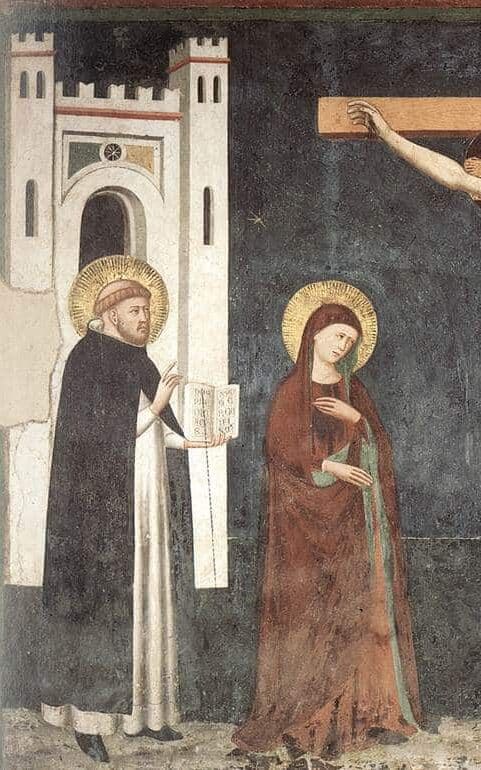
In 1938 the first and only issue came out of a highly unusual magazine with the significant title Valori primordiali (‘Primordial Values’). The magazine was edited by an eccentric figure called Franco Ciliberti. Giuseppe Terragni was directly involved in the undertaking, and responsible too for the magazine’s elegant graphic design. The contributors to Valori primordiali included artists like Lucio Fontana, Carlo Carrà, Arturo Martini, Osvaldo Licini and Giorgio Morandi and writers like Massimo Bontempelli and Salvatore Quasimodo; among the architects involved in Valori Primordiali, in addition to Terragni, were Pietro Lingeri, Ernesto Nathan Rogers and Carlo Cattaneo. Noteworthy was the manifesto that Ciliberti wrote and published in the issue, entitled ‘Sul primordiale’ (‘On the Primordial’). It is divided into six sections: Primitivism, Pathos of the One, Magic, Originality, Number and Mythical Nature. These six subtitles encapsulate the mystery that is Giuseppe Terragni. Terragni was in search of a primordial architectural form, one able to evoke the idealisation of architecture and with it, its magical dimension. He was looking for an ‘original’ form, in the sense of a form from which all others spring by analogy: of a form in other words that is at the origin. It should be noted that the adjective ‘original’ has a dual meaning: on the one hand the original is what lies at the origin; on the other, paradoxically, it is what is completely new, something unexpected. This is an ambiguity typical of Terragni, who painted in a figurative manner and at the same time conceived abstract works of architecture. In short we can say that Terragni, and Ciliberti with him, saw in the primordial or the primitive a magical encounter between what was ancestral and what was instead yet to come: they saw a meeting, and this was something that the Italian culture of the 1930s sought spasmodically, between Metaphysical Art and Futurism.
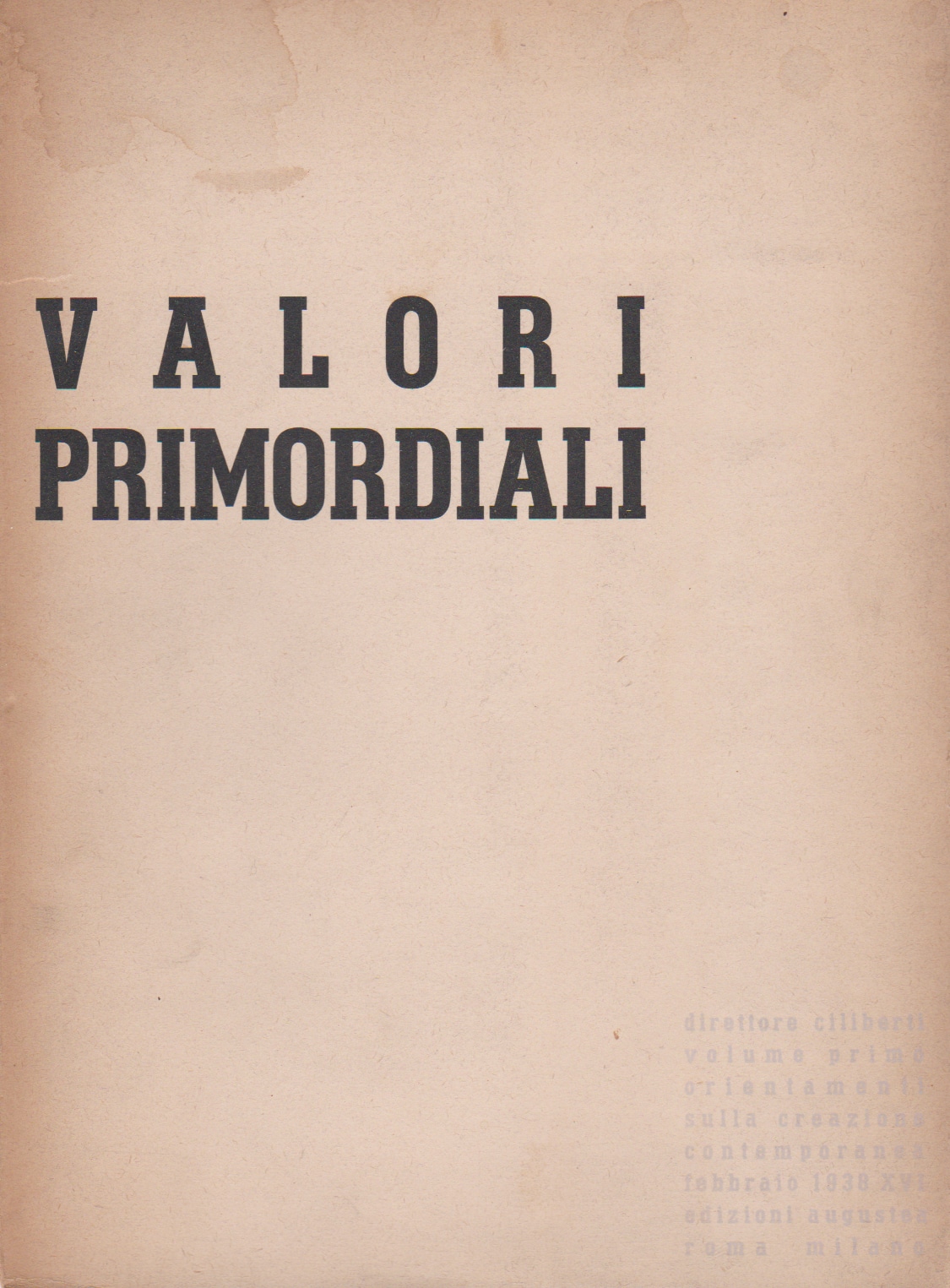
Let’s go back to the bozzetto for the competition. Terragni was twenty-two when he made it. He had just finished his studies at Milan Polytechnic (he was one of the first to graduate from the school) and his teachers had been figurative, and by and large Metaphysical, architects, like Pietro Portaluppi. The small bozzetto that he made is wholly figurative, tending to the Metaphysical, and more precisely can be linked with the current that gravitated around another magazine of those years, Valori Plastici. The design of the memorial is based on those plastic values, i.e. on the evocative capacity of a clear and well-defined structure with clean outlines, on an essentiality that is intensified by the fact that the memorial is built of just one material. In the elevation of the project we can see how the new intervention is in figurative continuity with the church, the tower and the surrounding houses, and with the cathedral that can be glimpsed behind; a continuity that Terragni emphasises by drawing the urban perspectives from which the new intervention would be viewed. For those who know Como the intervention proposed by Terragni is like a summation of the city’s most important works of architecture, from the cathedral to the extraordinary Romanesque church of Sant’Abbondio, as if Terragni had wished to represent in his memorial the ‘primordial value’ of his home town.
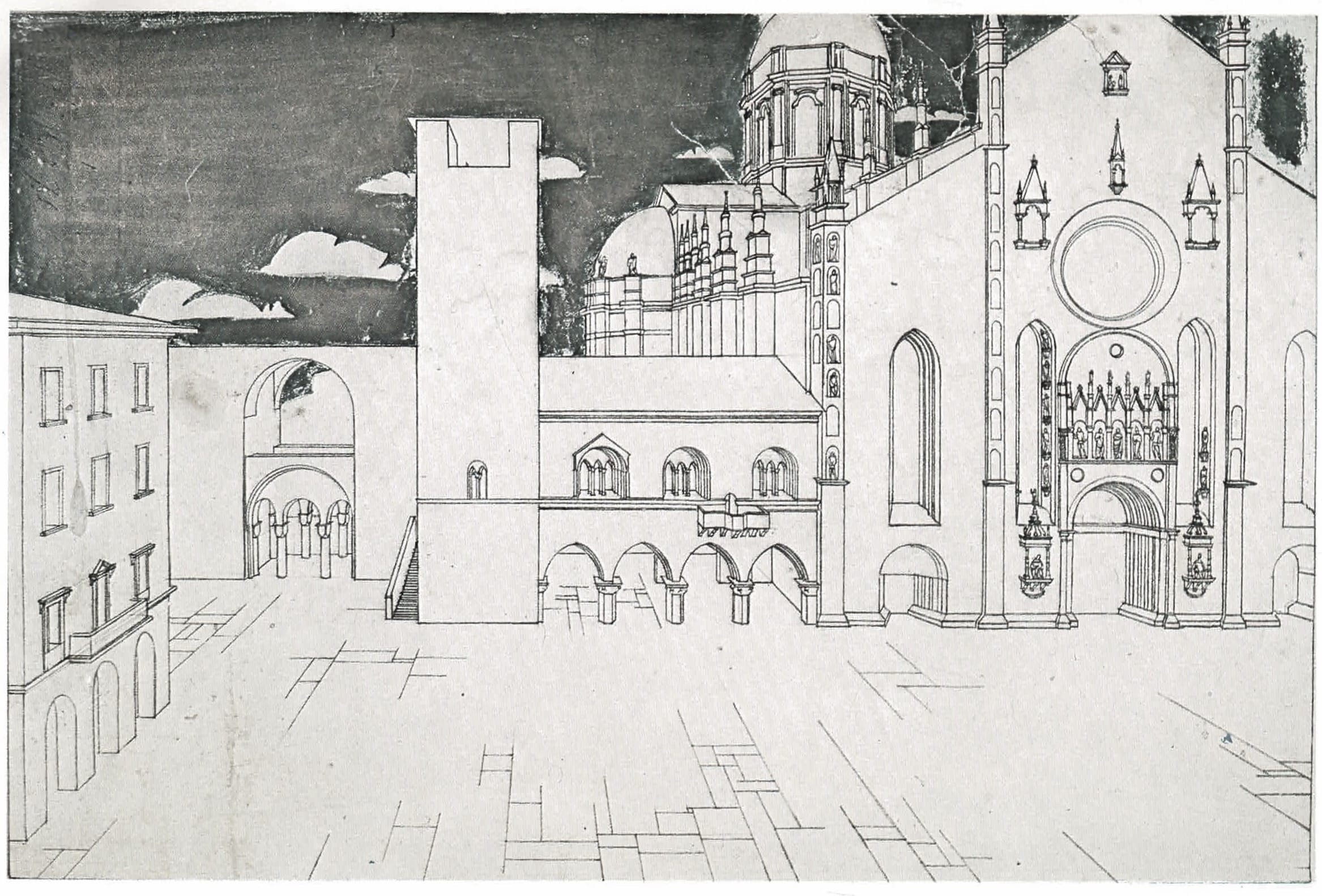

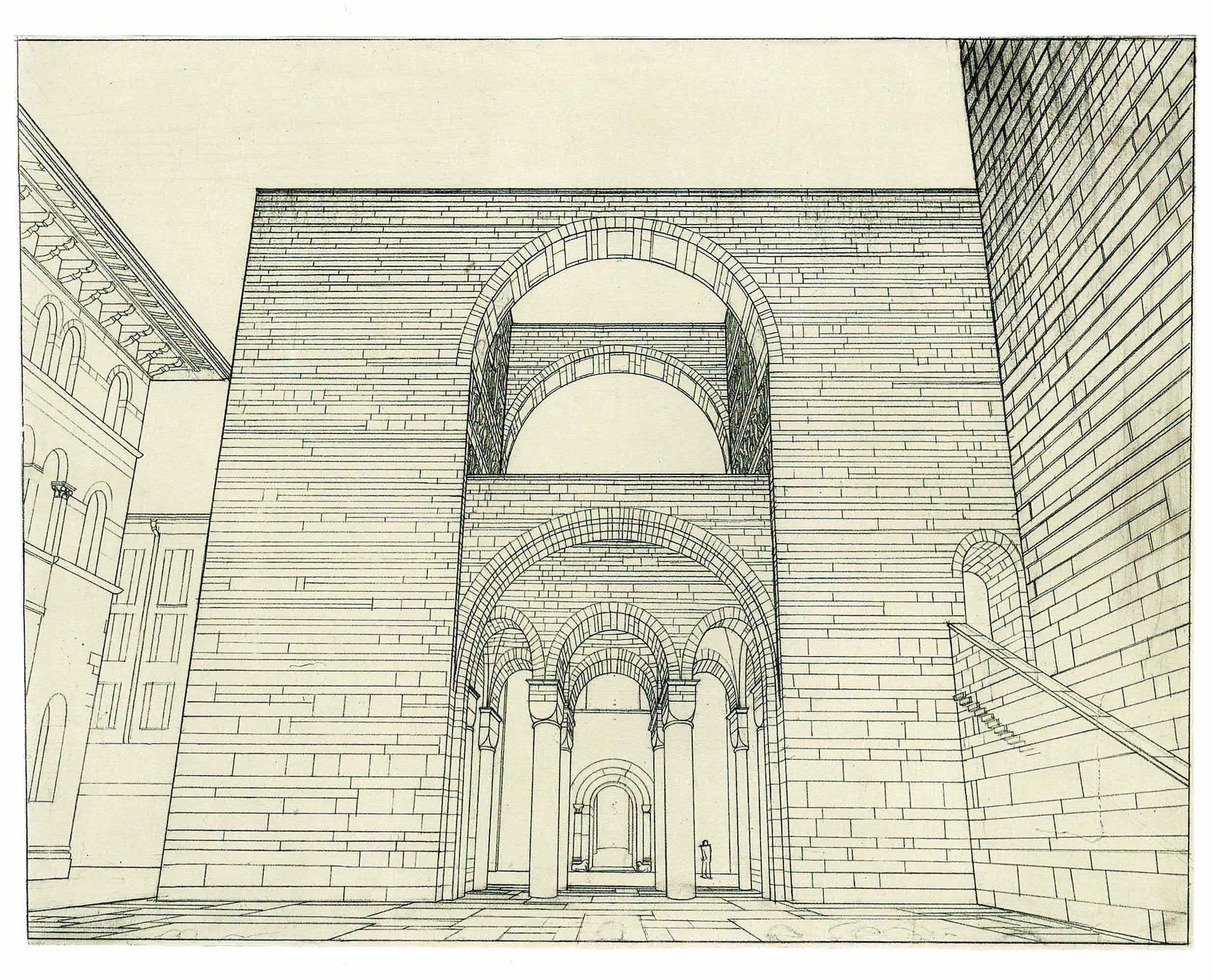
There is no hint in the bozzetto of the abstraction for which Giuseppe Terragni would become famous. But if considered in the light of ‘primordial values’ this assertion can be refuted. Giuseppe Terragni, like the artists belonging to that group, saw no difference between what was figurative and what was abstract, inasmuch as he regarded both options as underlying the primordial ideal form. For him abstraction was a sort of radicalisation of primordial figuration, almost a schematic version of it, a schema that he saw in the works of Piero della Francesca as well as in Romanesque architecture. In 1940, fourteen years after the bozzetto of the War Memorial, Terragni designed Casa Vietti, once again located in the historic centre of Como. In a gap in the urban fabric he proposed a work of pure abstraction. The elements of the composition are few: pillars, frames and large panes of glass that make up a slender and lyrical structure, looking as if it were hovering above the mediaeval vestiges that can be seen in the courtyard behind the suspended pavilion. The distance between the War Memorial and Casa Vietti is obvious, and yet in their comparison we can grasp the direction of Terragni’s research: it started out from historical architectural forms that were stylised into objects, as happens in the War Memorial. Following the stylisation, in a further transfiguration, Terragni passed everything through the filter of abstract essentiality. I’ve always had the impression that Terragni saw things in an abstract way and this abstract way of looking at things was well suited to a person who believed, like many of his friends in Como, in a particular kind of mysticism, a blend of Pythagorean and Platonic esotericism, influenced as well by his understanding of the Christian mystics as viewed through the work of Dante Alighieri.

So Terragni’s research was based on that transfiguration of the form on which Ciliberti insisted: it started out precisely from the War Memorial that Terragni, at the age of just twenty-two, designed not so much to celebrate the figurative plastic form as to stylise it. In doing so, he was preparing himself to render it abstract in an atmosphere which owes its lyricism to the fact that in it, in its further abstract transfiguration, we still hear the echo of ‘primordial values’.

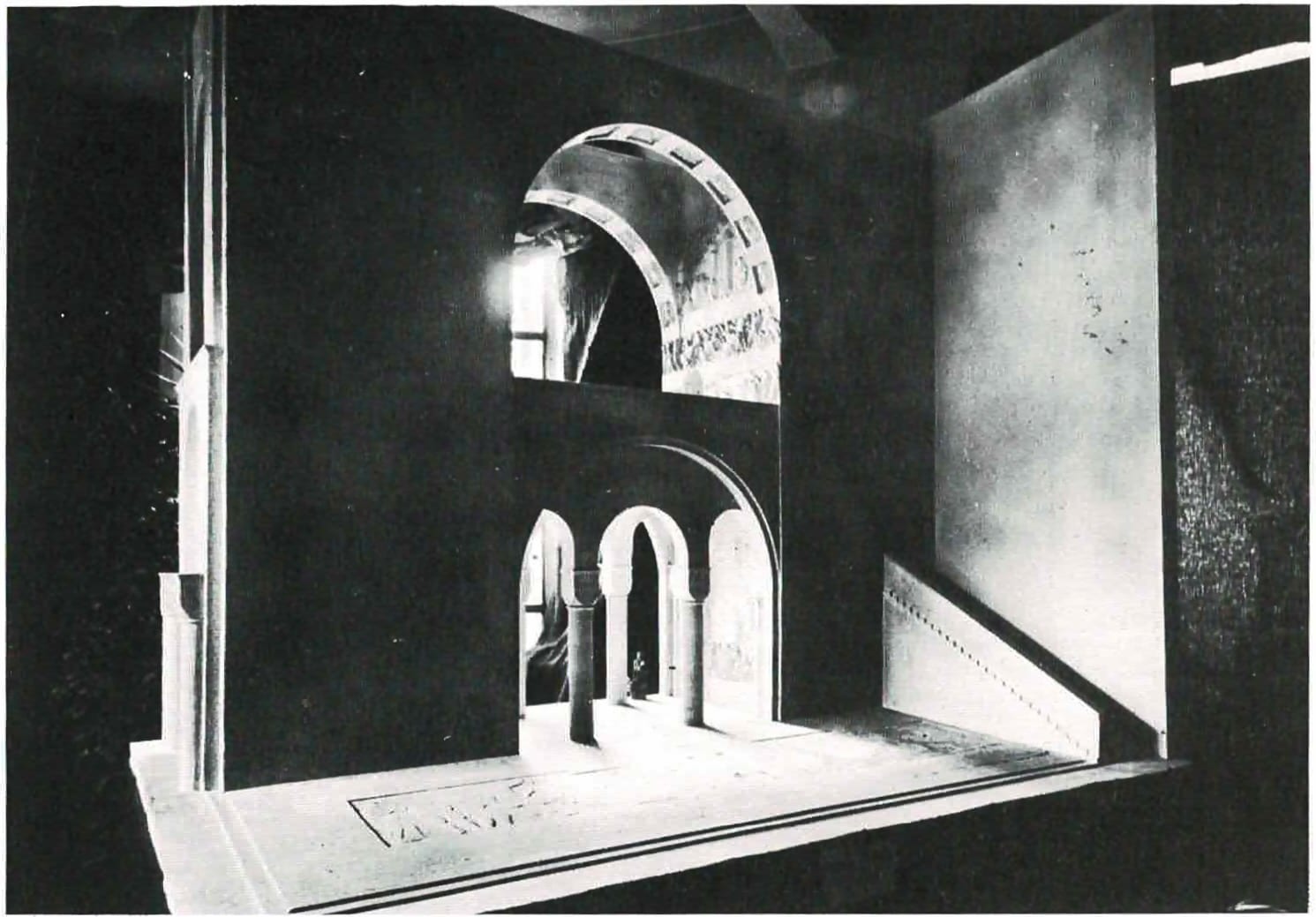
Translated from Italian for Drawing Matter by Huw Evans.
Valerio Paolo Mosco is an architect, architecture critic, and director of the online magazine Viceversa. He teaches at UAV (Istituto Universitario di Architettura di Venezia) and has taught at Cornell University, the Illinois Institute of Architecture, and the University of Navarra (Pamplona). He is the author of numerous publications, including Fragilità in architettura (Lettera 22, 2024), Kitsch in architettura (Lettera 22, 2023) and Giuseppe Terragni: His War, His Death (Forma Edizioni, 2021).
